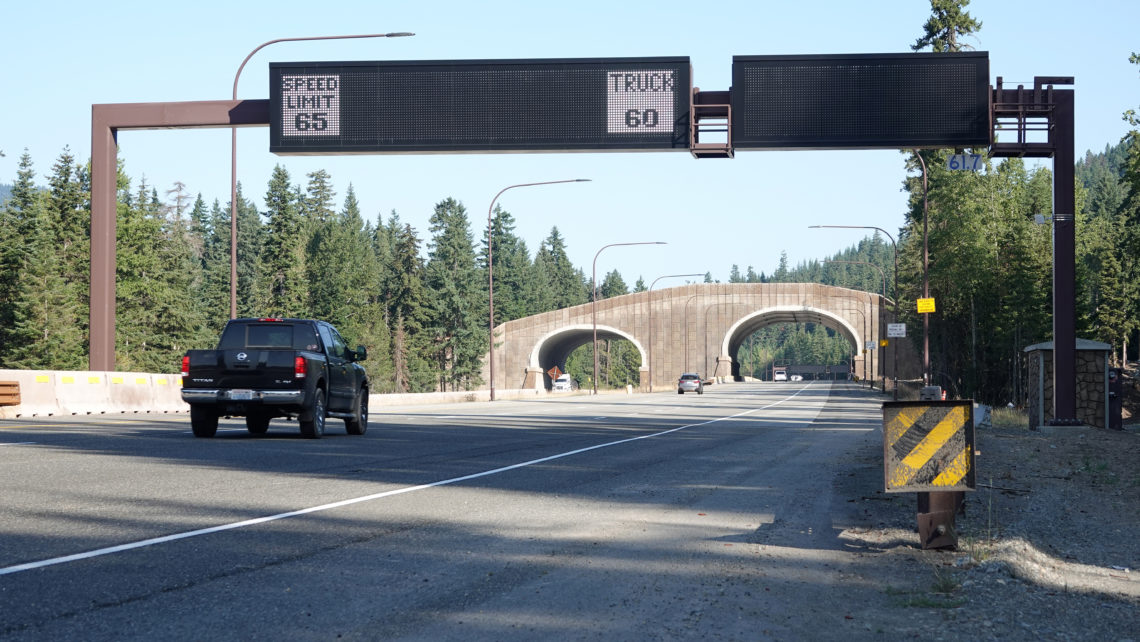
I-90 Snoqualmie Pass East Keeps the Economy Moving, People and Wildlife Safe
Interstate 90 is a crucial transportation link connecting Puget Sound’s large population and business centers with eastern Washington, the heart of the state’s agricultural industries. The uninterrupted movement of people, freight and agricultural products over I-90 Snoqualmie Pass is essential to the quality of life, and the economic vitality of Washington State. Snoqualmie Pass is one of three major cross-mountain passes, with an average of 31,000 vehicles traveling over the pass daily and of those vehicles, 8,000 are freight.
The I-90 Snoqualmie Pass East project improves a 15-mile stretch of I-90 from Hyak to Easton that runs through the Okanogan-Wenatchee National Forest. Work on this project benefits users of the corridor by:
- Addressing road closures due to avalanches and slope instability
- Replacing structurally deficient pavement
- Providing additional capacity for increasing traffic volumes
- Addressing ecological connectivity for wildlife
The Washington State Department of Transportation took an innovative, collaborative approach to keep the environment as a top priority. As part of the National Environmental Policy Act, WSDOT created an interdisciplinary team consisting of various resource agencies and organizations, as an advisory group to recommend a “Preferred Alternative” for construction. These included U.S. Forest Service, Washington state departments of Ecology and Fish & Wildlife, Conservation Northwest and the Mountains to Sound Greenway. This ensured that stakeholders’ needs and concerns were addressed early in the planning stages.
For ecological connectivity, WSDOT worked with biologists to identify and construct wildlife structures that connect habitat, as well as provide safe passage for wildlife to move under or over the interstate, preventing collisions with vehicles. Fencing will guide wildlife to the various crossing locations.
The project addresses environmental goals, while at the same time ensuring the safe and efficient movement of people, goods, and wildlife across this unique landscape.
Read additional stories from this state:
- Alaskan Way Viaduct Replacement Program
- Colman Dock Rebuild to Ensure Continued Operation and Multimodal Access
- North Spokane Corridor – A Practical Solutions Approach to Spokane’s Transportation Future
- SR 520 Corridor Program Ensures Safe, Reliable Transportation Connections for All Users
- SR 529 Estuary Restoration Helps Salmon Recovery, Future Projects


